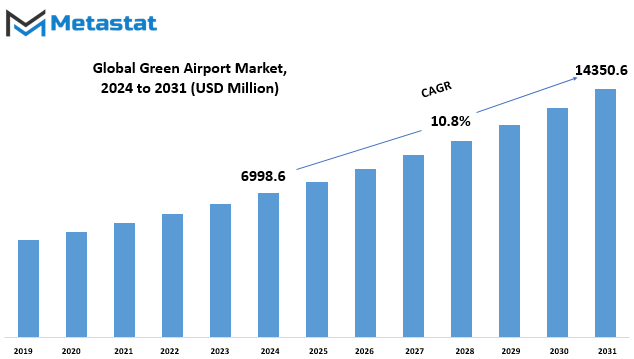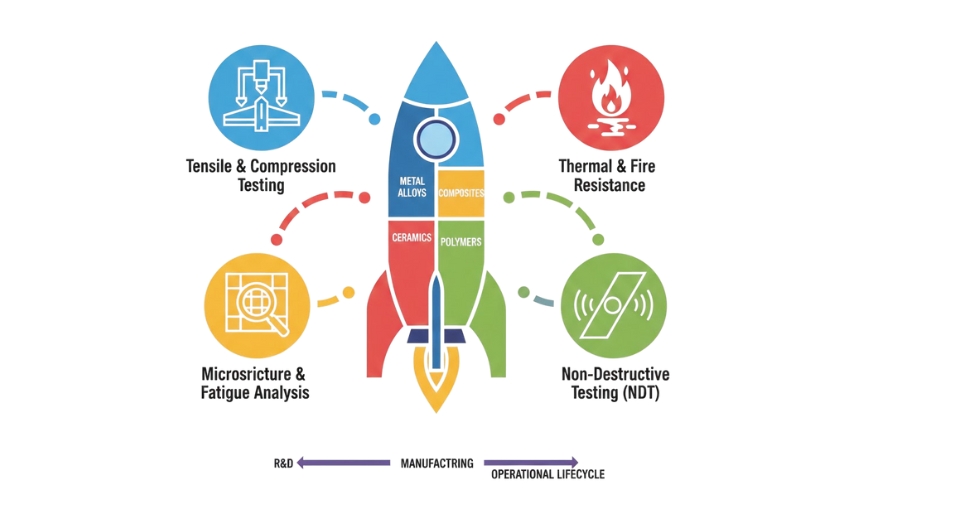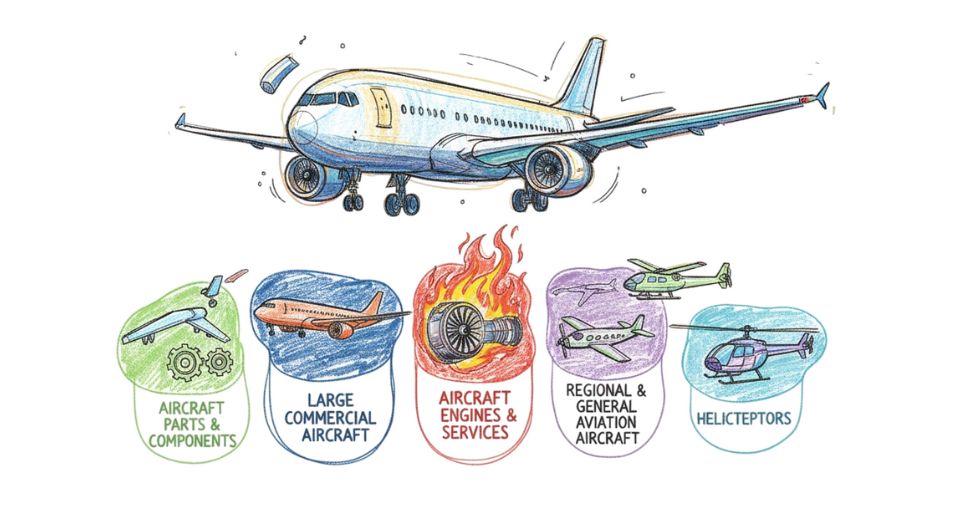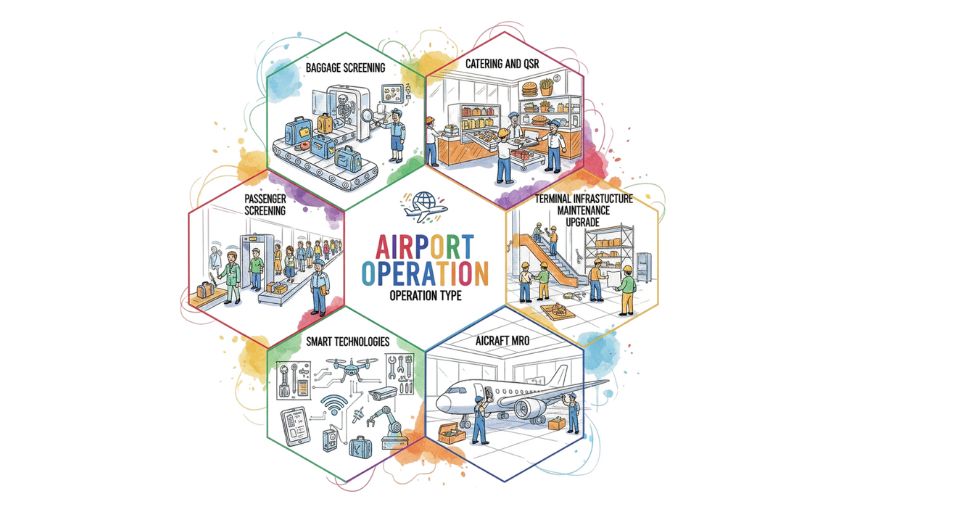MARKET OVERVIEW
The Global Green Airport Market stands at the forefront of a transformative era, embodying the convergence of environmental sustainability and aviation infrastructure. This innovative market segment represents a paradigm shift in the aviation industry, where airports are no longer just hubs for transit but have emerged as key players in fostering a sustainable future. The concept of green airports goes beyond mere compliance with environmental regulations; it encapsulates a holistic approach towards minimizing the ecological footprint of aviation activities.
The Global Green Airport Market is driven by the imperative to address the environmental challenges associated with air travel. With the aviation industry being a significant contributor to carbon emissions and other environmental pollutants, the demand for green airports has gained momentum. These airports are characterized by their commitment to adopting eco-friendly practices, integrating renewable energy sources, and implementing innovative technologies to mitigate the environmental impact of air travel.
One of the primary drivers shaping the Global Green Airport Market is the increasing awareness and concern about climate change. Governments, regulatory bodies, and passengers alike are pushing for sustainable practices in the aviation sector. Green airports respond to this demand by incorporating energy-efficient designs, utilizing solar and wind power, and implementing waste reduction and recycling programs. Such initiatives not only contribute to environmental conservation but also position airports as responsible corporate citizens.
Moreover, the Global Green Airport Market reflects the integration of advanced technologies in airport operations. From smart energy management systems to data-driven decision-making processes, green airports leverage cutting-edge innovations to enhance efficiency and reduce resource consumption. The deployment of electric ground vehicles, implementation of energy efficient lighting systems, and the use of sustainable construction materials are all indicative of the industry’s commitment to embracing technology for a greener future.
The economic aspect of the Global Green Airport Market is another facet that cannot be overlooked. As sustainability becomes a key criterion for travelers choosing their routes and layovers, airports that prioritize green practices stand to attract a growing segment of environmentally conscious passengers. This shift in consumer preferences not only contributes to the economic viability of green airports but also encourages other aviation stakeholders to adopt sustainable measures to stay competitive.
Global Green Airport market is estimated to reach $14350.6 Million by 2031; growing at a CAGR of 10.8% from 2024 to 2031.

GROWTH FACTORS
One of the key drivers propelling the Green Airport market is the adherence to Environmental Regulations and Policies. Governments worldwide are increasingly recognizing the need for sustainable practices in the aviation sector. As a result, stringent environmental regulations and policies are being implemented to curb the industry's ecological footprint. Airlines and airport authorities are compelled to adopt green practices to comply with these regulations, thereby driving the growth of the market.
Corporate Social Responsibility (CSR) and Public Image constitute another driving force behind the market's expansion. In an era where environmental consciousness is on the rise, companies in the aviation sector are placing greater emphasis on CSR initiatives. Adopting green airport practices not only aligns with environmental responsibility but also enhances the public image of airlines and airports. As consumers become more environmentally conscious, companies investing in sustainability are likely to attract positive attention and patronage.
However, the growth of the Global Green Airport market faces certain restraints. High Initial Investment Costs pose a significant hurdle for entities aiming to adopt eco-friendly airport practices. The implementation of green technologies and infrastructure requires substantial upfront investment, deterring some market participants. Overcoming this restraint necessitates strategic financial planning and government incentives to ease the financial burden associated with the initial stages of adopting green airport solutions.
Moreover, the market is impeded by Technological and Operational Challenges. The integration of sustainable technologies into existing airport operations can present complexities. From the retrofitting of infrastructure to the training of personnel, the transition to green airport practices demands a meticulous approach to overcome operational challenges. Technological advancements and comprehensive training programs become imperative in addressing these hurdles and ensuring a seamless adoption of sustainable practices.
MARKET SEGMENTATION
By Energy Type
The global Green Airport market, categorized by Energy Type, is more specifically divided into Bioenergy, Solar energy, and Wind power. This segmentation allows for a closer examination of the different sources that contribute to the environmental sustainability of airports worldwide.
Bioenergy, as a form of renewable energy derived from organic materials, plays a crucial role in reducing the carbon footprint of airports. It involves harnessing energy from biomass, such as agricultural residues and organic waste, providing a sustainable alternative to traditional fossil fuels. This not only addresses environmental concerns but also promotes the efficient use of organic resources.
Solar energy, another key segment, involves the utilization of sunlight to generate electricity. Solar panels installed at airports capture sunlight and convert it into usable energy, contributing to a cleaner and more sustainable power source. The adoption of solar energy in the aviation sector not only reduces dependency on conventional energy sources but also aligns with the global push for cleaner and greener alternatives.
Wind power represents yet another facet of the Green Airport market. Harnessing the kinetic energy from the wind, airports can generate electricity through wind turbines. This sustainable approach taps into the natural power of the wind to produce clean energy, offering an eco-friendly alternative to traditional power generation methods.
The segmentation of the Green Airport market based on these energy types reflects a strategic move towards environmentally conscious practices within the aviation industry. By incorporating bioenergy, solar energy, and wind power, airports contribute to a more sustainable and ecologically responsible approach to meeting their energy needs.

By Airport Type
The global Green Airport market is categorized into two main segments based on airport type: Civil and Military. In 2023, the Civil segment held a value of 5616.2 USD Million, while the Military segment was valued at 757.7 USD Million.
This market division reflects the different functions and characteristics of airports, with Civil airports primarily catering to commercial and civilian air travel, and Military airports serving the needs of defense and military operations. The economic value assigned to each segment provides insights into their respective contributions to the overall market.
The Civil segment, with its substantial value of 5616.2 USD Million, indicates a robust presence in the market, reflecting the widespread demand for air travel and the importance of commercial aviation. This segment encompasses airports that play a vital role in connecting cities, countries, and continents, facilitating the movement of people and goods on a global scale.
On the other hand, the Military segment, valued at 757.7 USD Million, highlights the significance of airports dedicated to military operations and national defense. These airports serve as crucial hubs for the deployment, maintenance, and strategic positioning of military assets. The value assigned to this segment underlines the continued investment in military infrastructure and the importance placed on national security.
The segmentation of the Green Airport market by airport type provides a clear picture of the diverse role airports play in the global transportation and security landscape. The substantial values associated with both the Civil and Military segments underscore their respective contributions, showcasing the dynamic nature of the aviation industry and its integral role in shaping our interconnected world.
By Airport Class
The Class A segment, a noteworthy player in this dynamic market, asserted its prominence by registering a substantial value of 3776 USD Million in the year 2023. This robust financial standing attests to the significant role played by Class A airports, presumably characterized by their scale, services, and overall operational magnitude.
Moving on to the Class B airports, the fiscal landscape in 2023 saw them amass a valuation of 1582.5 USD Million. This figure, while slightly less than that of their Class A counterparts, underscores the substantial economic contribution made by Class B airports within the Global Green Airport market. The inherent differences in scale and operational parameters between Class A and Class B airports are evidently reflected in their respective market valuations.
In Class C airports, a distinct economic footprint was carved, culminating in a value of 1015.4 USD Million in 2023. This segment, though smaller in comparison to Class A and Class B, plays a crucial role in the broader tapestry of the Green Airport market. The relatively modest valuation of Class C airports doesn’t diminish their significance; rather, it highlights the diverse financial dynamics at play across different airport classes.
In summation, the stratification of the Global Green Airport market based on Airport Class provides a lucid snapshot of the economic contributions and significance of each class. From the commanding heights of Class A to the resilient standing of Class C, these segments collectively shape the contours of an industry that extends far beyond mere travel facilitation, where economic value and operational impact intersect in a harmonious balance.
REGIONAL ANALYSIS
The global Green Airport market is categorized based on geography into five main regions: North America, Europe, Asia-Pacific, South America, and the Middle East & Africa. This segmentation helps in analyzing the market trends and dynamics within specific geographical locations.
North America stands out as a significant player in the Green Airport market, showcasing a robust presence and influence. The region's commitment to environmental sustainability and green initiatives has fueled the growth of eco-friendly airport infrastructure. The emphasis on cleaner technologies and eco-conscious practices in airport operations has contributed to the region's prominence in the global market.
Europe, too, is making noteworthy strides in the Green Airport sector. The continent's proactive approach towards environmental conservation reflects in the eco-friendly initiatives taken by its airports. From energy-efficient designs to waste reduction strategies, European airports are aligning their operations with green principles, contributing to the overall development of the global Green Airport market.
Asia-Pacific, with its burgeoning economies, is emerging as a key player in the global Green Airport landscape. The region's rapid growth in air travel demands sustainable airport solutions. Many airports in Asia-Pacific are adopting green technologies and practices to minimize their environmental impact, fostering a positive outlook for the market's growth.
In South America, the Green Airport market is gradually gaining traction. The region's airports are increasingly recognizing the importance of environmental responsibility. Initiatives like renewable energy adoption and waste management practices are becoming integral components of South American airport operations, influencing the market's expansion.
The Middle East & Africa are also witnessing a shift towards sustainable airport development. As the awareness of environmental issues grows, airports in these regions are incorporating green technologies to reduce their ecological footprint. The commitment to eco-friendly practices is poised to drive the Green Airport market forward in the Middle East & Africa.
COMPETITIVE PLAYERS
The Global Green Airport market is marked by the presence of key players who play a significant role in shaping the industry. These companies contribute to the development and advancement of environmentally friendly practices within airport operations. Among the prominent players in this field are SITA, TKH Airport Solutions, ABB Group, Schneider Electric, Acciona, S.A., Cisco Systems, Inc., Honeywell International Inc., Fraport AG, Siemens AG, and Thales Group.
SITA, a notable player in the Green Airport sector, focuses on providing innovative solutions to enhance the sustainability of airport operations. Their contributions range from efficient waste management to energy conservation measures. Similarly, TKH Airport Solutions actively participates in the development of technologies that reduce the ecological footprint of airports. ABB Group, known for its expertise in automation and power technologies, brings its capabilities to create more energy-efficient and eco-friendly airport infrastructures.
Schneider Electric, another key player, specializes in energy management and automation solutions. Their involvement in the Green Airport market is reflected in initiatives aimed at optimizing energy consumption and reducing carbon emissions. Acciona, S.A., a global sustainable infrastructure and renewable energy company, contributes to the development of green airport projects with a focus on renewable energy sources and sustainable construction practices.
Cisco Systems, Inc. brings its expertise in networking and information technology to the Green Airport arena. Their solutions often revolve around creating smart and connected airport ecosystems, fostering efficiency and sustainability. Honeywell International Inc. is known for its contributions to aviation technologies, with a focus on developing environmentally friendly solutions for airport operations.
Fraport AG, Siemens AG, and Thales Group are also noteworthy players in the Green Airport market, each bringing their unique strengths to the table. Fraport AG, a major airport operator, implements sustainable practices across its portfolio, aiming for reduced environmental impact. Siemens AG, a global technology company, contributes to the development of green infrastructure through innovative solutions in electrification and automation. Thales Group, specializing in aerospace and defense, plays a role in enhancing the efficiency and sustainability of airport operations.
Green Airport Market Key Segments:
By Energy Type
- Bioenergy
- Solar energy
- Wind power
By Airport Type
- Civil
- Military
By Airport Class
- Class A
- Class B
- Class C
Key Global Green Airport Industry Players
- SITA
- TKH Airport Solutions
- ABB Group
- Schneider Electric
- Acciona, S.A.
- Cisco Systems, Inc.
- Honeywell International Inc.
- Fraport AG
- Siemens AG
- Thales Group
WHAT REPORT PROVIDES
- Full in-depth analysis of the parent Industry
- Important changes in market and its dynamics
- Segmentation details of the market
- Former, on-going, and projected market analysis in terms of volume and value • Assessment of niche industry developments
- Market share analysis
- Key strategies of major players
- Emerging segments and regional growth potential








 US: +1 3023308252
US: +1 3023308252






